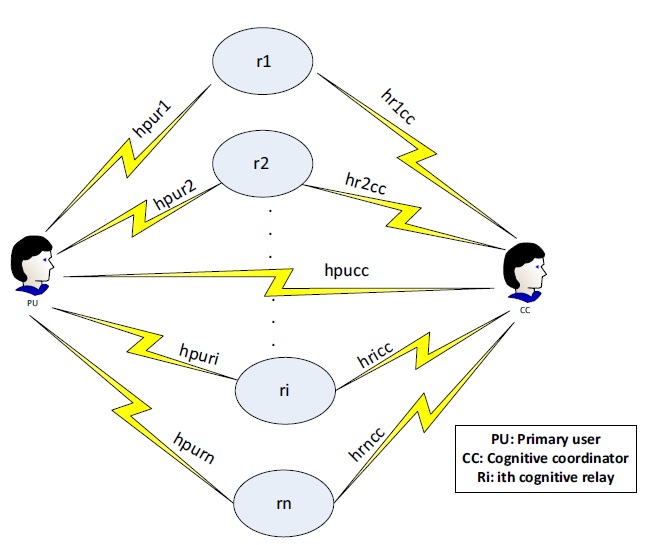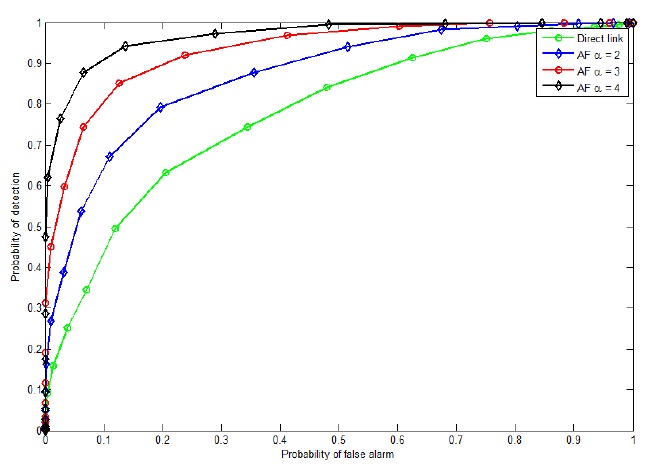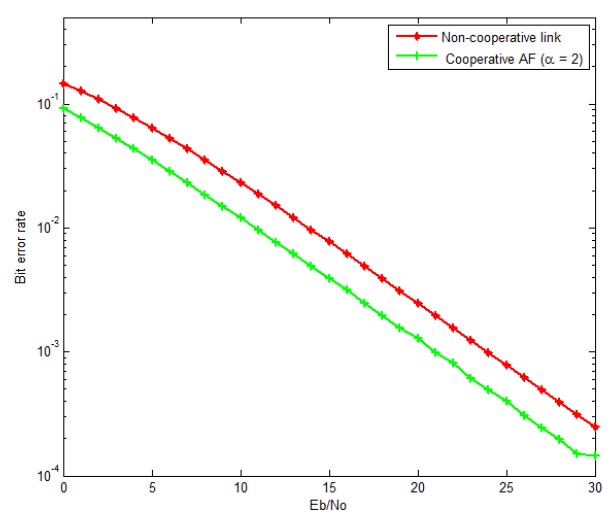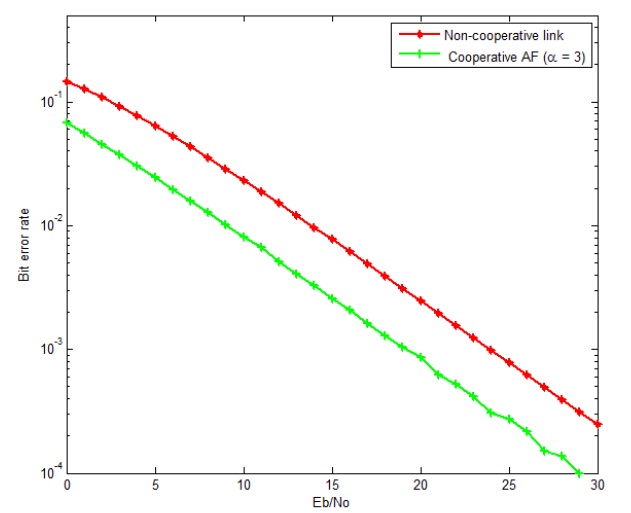



In wireless communication, spectrum utilization plays a vital role. A spectrum is shared by a licensed user (primary user [PU]); however, most of the time the spectrum remains under-utilized, particularly in the case of a television (TV) band.
Cognitive radio provides an excellent solution to this spectrum scarcity problem by utilizing the under-utilized bands, in which unlicensed users (secondary users [SUs]) access and utilize the spectrum when the PU is not present. The key features of a cognitive transceiver are radio environment awareness and spectrum intelligence [1]. Intelligence can be achieved by learning the spectrum environment and adapting the transmission parameters. For instance, SU attempts to detect the activities of PU, and if there are no PU activities, then SU gets access to the spectrum such that dynamic spectrum access can be achieved [2-5].
However, realization of the cognitive radio requires a strong guarantee of no interference to the licensed user. This motivates research on spectrum sensing and related technologies. At present, local spectrum sensing does not meet the requirement of reliable detection of the PU because of its limitations in the fading environment [6].
Therefore, cooperative spectrum sensing is introduced as a key to reduce the probability of interference to legacy systems [7]. Traditionally, three methods are used for performing spectrum sensing [8]: energy detection (noncoherent detection through received energy), matched filter (coherent detection through maximization of signal-to-noise ratio [SNR]), and cyclostationary feature detection (exploitation of the inherent periodicity of the primary signal). Among them, the energy detector is the most popular method. To improve the spectrum sensing accuracy, cooperative sensing makes use of the information exchange among SUs.
In [9], a two-user cooperative model is compared with non-cooperative systems. Detection probability is increased while the sensing time is decreased by 35%, which is important for long-term sensing. Further, Atapattu et al. [10] evaluated the performance of the energy detector in a Rayleigh fading channel and demonstrated a reduction of both the detection probability and the false-alarm probability.
In this study, we consider amplify and forward (AF)-based cooperative spectrum sensing in a cognitive radio network where multiple relay nodes are utilized to amplify and forward the primary user signal for better spectrum sensing, and maximal ratio combining is used for fusion detection by a cognitive coordinator. We also analyze the probability of detection and the bit error rate (BER) of the AF-based cooperative spectrum sensing. The simulation results show that the AF-based cooperative spectrum scheme outperforms the conventional scheme.
The rest of this paper is organized as follows: In Section II, we describe the proposed system model. In Section III, we analyze the detection probability and the BER of AFbased cooperative spectrum sensing. In Section IV, we present the simulation and numerical results. Finally, we draw conclusions in Section V.
A wireless network is assumed to cooperate over an independent and not necessarily identically distributed Rayleigh fading channel. Let
where
Additive white Gaussian noise, denoted by
>
B. AF-based Cooperative Spectrum Sensing
In AF-based cooperative spectrum sensing, relays receive information from the PU, and then amplify and forward this information to the cognitive coordinator by using the AF relay protocol. The relay nodes amplify both information and noise. The cognitive coordinator (fusion center) uses the energy detector method to decide the presence or absence of the PU by comparing with the detection threshold value.
Let us consider the model illustrated in Fig. 1; it has
The cognitive coordinator combines all signals using maximal ratio combining (MRC), compares the output of the energy detector with the threshold value, and decides on the presence or absence of the PU. In the next subsection, single and multiple cognitive relays are discussed.
1) Single Cognitive Relay Communication
Single cognitive relay communication consists of the PU, a cognitive relay node, and a cognitive coordinator. The signal received by the cognitive relay
Now, the received power at the cognitive coordinator is
For the energy detector, we use the signal squaring method. The detector at the cognitive coordinator uses a binary hypothesis such that we have
The output of the signal squaring method
where Γ(.) denotes the gamma function,
where
denote the SNR of the link from the PU to the relay node, and from the relay node to the cognitive coordinator, respectively.
2) Multiple Cognitive Relay Communication
In multiple cognitive relay communication, there are n cognitive relay nodes, the PU, and the cognitive coordinator, as shown in Fig. 1.
All the cognitive relay nodes receive the signal from the PU through an independent fading channel.
The amplification factor is calculated as
Each cognitive relay node amplifies the signal and forwards it to the cognitive coordinator. All cognitive relay nodes are orthogonal to each other and forward information to the cognitive coordinator. Further, such an orthogonal channel can be realized by TDMA. The MRC ratio is used at the cognitive coordinator.
The SNR of γ is calculated as follows:
where
However, the transmission between the PU and the cognitive coordinator can also take place by a direct link. The SNR of the cognitive coordinator and the single relay can be calculated as follows:
Further, the total SNR of the cognitive coordinator and the multiple relays can be calculated as follows:
In this section, we analyze the performance of AF-based cooperative spectrum sensing in terms of the average detection probability and the BER. To this end, we assume that the energy detection is used at the cognitive coordinator to make a decision regarding whether the PU is active or not, on the basis of the output of the energy detector,
where
and Γ(
>
A. Average Detection Probability over a Fading Channel
The probability of a false alarm is independent of γ; thus, the probability of a false alarm over a fading channel can be calculated using Eq. (11). On the other hand, the probability of detection is a function of γ. Thus, the average probability of detection can be calculated by averaging Eq. (12) over the fading channel such that we have
where
For measuring
For calculating pdf, we take a derivative of Eq. (14), and we have
The pdf of
An alternative representation of the generalized Marcum Q-function can be expressed as follows [11]:
By substituting (16) and (17) in Eq. (13), we can calculate the average probability as follows:
This is the upper bound expression of AF-based cooperative spectrum sensing for average probability detection. When there is no relay cooperation, the average probability of detection for a direct link can be expressed as follows:
In the next section, we describe the BER analysis.
As the probability of detection increases, the BER at the cognitive coordinator decreases. The BER is calculated with MRC in a Rayleigh fading channel. The instantaneous equivalent end-to-end SNR is given in Eq. (5). The most vital feature of a cooperative relay is CDF. The CDF of the ith relay can be expressed as follows:
where
The conditional bit error probability for different modulation schemes can be formulated as follows [11]:
where
where
Under the independent channel assumption and by using Eq. (21), we can express the joint pdf in terms of the joint CDF as follows:
By substituting (22) in (23), we can express the ABER as follows:
IV. SIMULATION AND NUMERICAL RESULTS
In this section, we describe the simulation of the AF-based cooperative spectrum sensing scheme for the probability of detection and BER. The Rayleigh fading channel and MRC are simulated in MATLAB for calculating the probability of detection and the BER. We have simulated the receiver operating characteristic (ROC) for the detection of the probability of AF-based cooperative spectrum sensing with different values of the amplification factor.
From Fig. 2, it can be observed that the detection probability increases with an increase in the amplification. Figs. 3 and 4 depict the BER analysis with SNR for direct (noncooperative) and cooperative links with different amplification factors. The BER decreases with an increase in the amplification factor. Further, with an increase in the amplification factor, the probability of detection increases.
In the BER analysis, it can be observed from the figures that the BER decreases with an increase in the amplification factor. However, keeping in view the tradeoff between the amplification factor and the power, the amplification factor should not be very high.
In this study, the performance of AF-based cooperative spectrum sensing was investigated in terms of the detection probability and the BER. It was observed that the cooperative relay played a vital role in improving the performance of the detection of the PU in an environment with the most interference; this directly affected the BER, which was an important factor for the sensing and transmission.



